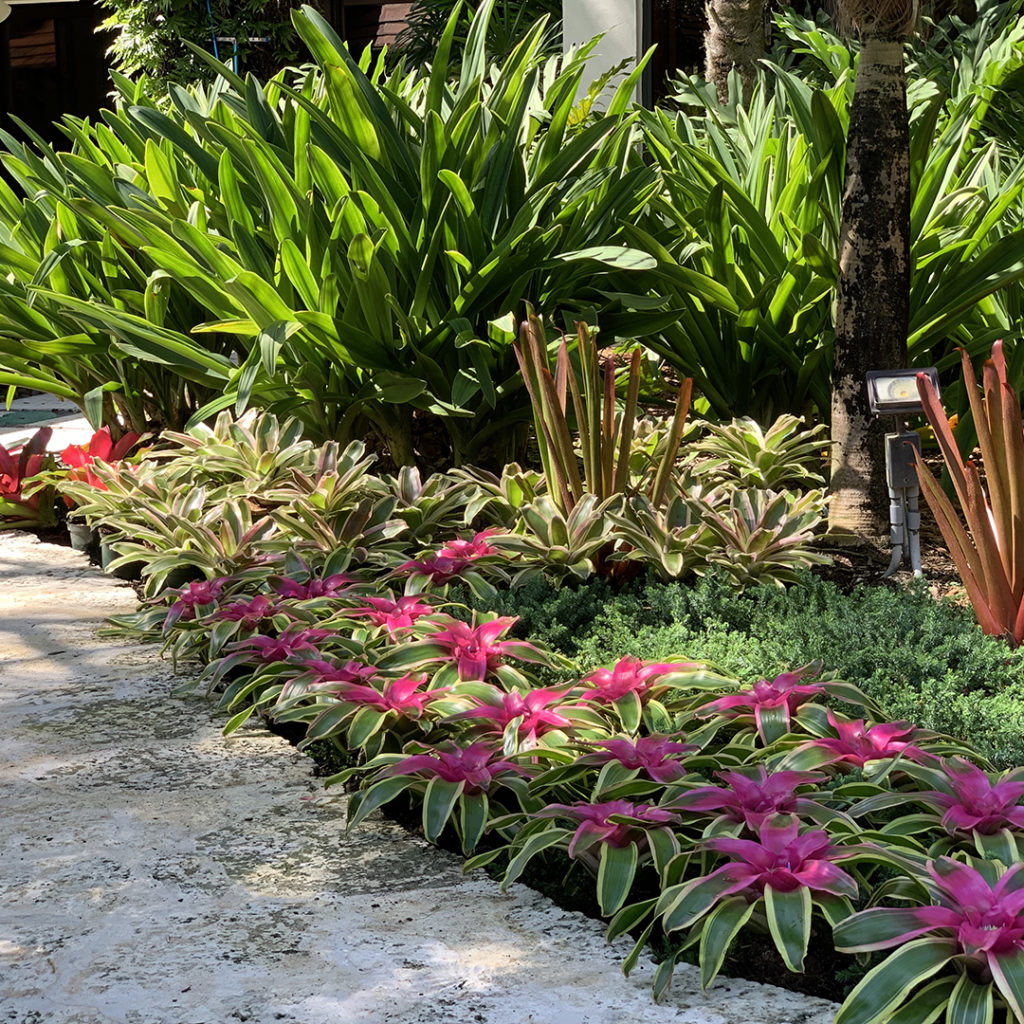
Bromeliad Basics
These easy-care tropical beauties can turn your landscape into a wonderland of color.
With thick strappy leaves accented with colorful splashes and stripes, bromeliads are an instant way to add impact to any border, garden, or outdoor container. These jungle natives are so beautiful, yet so easy. Savvy homeowners are popping these tropical plants into landscapes from Miami to Minnesota. Here’s what you need to know about bromeliads.
Where Can I Plant Them?
Bromeliads love hot weather so they perform like champs all year long in warm climates (hello, USDA Zones 10-11). In all other zones, they can be used as big showy annuals in the landscape and containers for months — from spring through first frost. Plants have gorgeous strap-like leaves, so they work great as a groundcover in shady or partially shady locations. They’re ideal for brightening up hard-to-plant spots under mature trees.
Where to Plant Bromeliads in Your Landscape
Talk about instant impact! Bromeliads will fill your landscape with stunning color as soon as you plant them. Use them to line a walkway or garden path or mass them under trees as an exotic and easy alternative to impatiens or begonias. Spacing is easy because the plants won’t grow out of control like some other ground covers will do. In northern climates, use bromeliads where you use hostas. You’ll love the way that add vibrant color to shaded spots.
How to Plant Bromeliads in the Ground
To enjoy a solid mass of color in a shady border, plant bromeliads just close enough so the leave tips of one plant will barely touch its neighbor. That way, you won’t see any awkward open patches of soil between the plants, effectively creating a solid carpet of color. Place taller, vase-shaped bromeliads in the back of the border and position shorter varieties front and center. In colder climate regions you also might want to dig a hole, then simply set your bromeliad, pot and all, into the soil. When frost threatens, you can just pop them out of the ground and move them indoors. Wear gloves when planting bromeliads because their firm serrated leaves can cause skin scratches.
Add Bromeliads to Containers, Too
Bromeliads also look terrific in containers by themselves or mixed with annual and perennial flowers. Use a loose, potting soil mix that’s designed especially for bromeliads or orchids. Or, mix your own by adding a generous helping of bark chips to a commercial potting mix. Mix and match plants with annual flowers, such as begonia, and succulents, such as snake plant.
How to Care for Bromeliads
Bromeliads are a snap to grow and, once planted, require only a modicum of care from you.
–Start with Good Soil
Bromeliads thrive in rich, well-drained soil that doesn’t stay mucky after a heavy rainfall. It’s often best to improve your planting area by adding a generous helping of shredded bark into the top few inches of soil. This will improve drainage around your plants. Because they are tropical in nature bromeliads won’t tolerate freezing conditions, but in Northern regions just bring them indoors in the fall and enjoy them as colorful houseplants.
–Plant in the Right Light
Most bromeliad varieties flourish in the shade, but there are a few that can handle some sun as long as the leaves don’t get baked in midsummer.
–Watering is Easy
Bromeliads are surprisingly drought resistant because they have the ability to absorb water two ways: through their roots, and for many varieties, through their central “trunk” which is the well formed in the center of the plant where the leaves join together. Water your bromeliads thoroughly whenever the soil starts to dry out, but don’t overdo it. These tough little plants don’t want to sit in wet soil. And, if rain is scarce, check that their tanks are flushed with fresh water.
–Feed Occasionally
You don’t need to worry too much about fertilizing bromeliads. They grow slowly and don’t really require much in the way of plant food. However, once or twice during the summer you may want to offer them a dilute solution of water soluble fertilizer, being careful not to spray it into the tanks of the plants.
Bromeliads Can Reproduce!
Some varieties grow a bit faster than others, producing babies or pups around the mother plants. If the plants start to get crowded, use a sharp knife to cut away the pups and replant them in another location. Or, if you like the look, simply leave them in place and enjoy a solid mass of color.